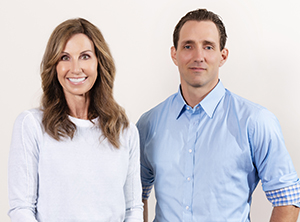By Janine Stichter, PhD (Behaviorist) and Scott Schutte (Coach/Gym Owner)
Scott here to kick us off.
As fitness professionals, our ultimate goal is to help our clients achieve their health and fitness objectives. We understand the importance of engaging in physical activity not only during our coaching sessions but also outside the gym. However, it's not uncommon for clients to struggle with maintaining a consistent exercise routine beyond their scheduled workouts. With the allure of entertainment options like Netflix, family responsibilities, and demanding work schedules, it can be challenging for them to stay focused and active.
One way to inspire clients to embrace movement outside the coaching sessions is by incorporating Habit Looping into their daily lives. But what exactly is Habit Looping, and how can it be utilized effectively? Let's break it down.
Habit Looping is a behavioral concept consisting of three components: a cue, a response to the cue, and a reward for the response. When applied consistently and strategically, it can help individuals develop long-lasting habits that promote physical activity and overall well-being. Here's how Dr. J explains the process.
Dr. J here to walk through what this looks like.
A habit loop consists of three elements: cue, routine, reward. When a person repeatedly performs this loop, it becomes a habit that they do automatically without much conscious thought. So basically this is how habits are built, good ones and less desirable ones. The reason behind this is that habits (aka behaviors) do not persist if they are not rewarded in some way.
So a few things to keep in mind when helping clients create or modify healthy habits that support their goals:
1) Identify the cues that trigger their current habits. If you can take the same cue (for example coming in the door from work) but replacing the routine (going for a glass of wine) with a new routine (let's say walking the dog) and keeping the same reward (might be stress release) then you have adjusted the habit loop.
Other times you need to change the cue (replace the wine bottle on the counter with the dog leash) to create a new routine.
Note cues are not always tangible items, Cues can be internal or external, and they can be anything from a particular time of day (mid afternoon slump that leads to high sugar snacks) to a specific feeling or emotion (bored/lonely).
2) Identify the current/ desired reward. If your client is wanting to modify a behavior, like replacing excessive tv watching with more activity, what do they get from the TV? Is it stress release from a long day? Then you need to make sure the replacement routine is also realizing a similar reward (escape). What else can they do to escape? Just asking them to get more steps around the neighborhood instead of tv won't work if they do not enjoy taking a walk alone. But if they do enjoy dancing, a dance class might do the trick. If it's a new habit you are building, remember to stack on existing routines and make sure your client is choosing cues and rewards that will best and easily support the new routine.
Remember, celebrate even the smallest efforts, so that your clients can build momentum to keep it up until it’s automatic, a habit. Remind your clients to start small - one habit at a time increases the likelihood they can stick with it and realize some success.
The benefits of using behavior science extend beyond just helping your clients achieve their fitness goals. By helping your clients make permanent lifestyle changes, you'll also see better client retention and satisfaction. Clients who are seeing results are more likely to stick with your services for the long-term, leading to increased revenue and a thriving business.
In conclusion, as a fitness professional, it's crucial to focus not just on the workouts your clients do in the gym, but also on their daily movements and overall lifestyle habits. But, to achieve long-term success, you also need to use behavior science to help your clients make permanent lifestyle changes. By doing so, you'll not only see better client results, but also a more successful business.
To learn more about behavior coaching and how this can improve your income and impact at www.healthybehaviorinstitute.com.
Janine Stichter & Scott Schutte

Scott Schutte is a personal trainer, 360 Wellness Coach, gym owner, and fitness educator who has guided thousands on their fitness journey. He educates professionals on successful coaching with a focus on behavior change. Connect with him:
Facebook - scott.schutte.12
Instagram - scott.schutte
Dr. Janine Stichter, with over 20 years of experience in behavior change, is a researcher, author, educator, and executive coach. She specializes in understanding behavior and developing practical, sustainable change strategies. Connect with her:
Facebook - janine.stichter.1
Instagram - drjaninestichter
Together, they co-founded the Healthy Behavior Institute, offering educational materials for fitness professionals and gym owners on behavior modification to enhance client results and increase revenue.